BBT Krauss 6x24 Mmes
| Das 6x24 Porro-1-Monokular wurde laut oberen Deckel mit Logo von BBT-Krauss hergestellt. Die weitere Beschriftung mit "Mmes." vermerkt, dass eine 1000er-Strichplatte eingebaut wurde. Diese ist horizontal in Zehnerschritten bis 100 )10, 20, 30 ...100) und vertikal bis 25 (10, 20) markiert (vgl. BBT 8x30). Der untere Deckel ist mit der Jahreszahl 1943 und darüber mit der Armeenummer 9421 sowie einer Krone gekennzeichnet. Von welcher Landesarmee es eingesetzt wurde läast sich nicht bestimmt sagen, da die Krone noch ncith zugeordnet werden kann (vgl. u. Köcherstempelung). Es könnte ggf. ein osteuropäisches Königreich gewesen sein, soweit dies zur politschen Lage 1943 passt. Die Deckel sind einfach verschraubt und schwarz lackiert. Das Glas ist noch unvergütet. Das Gehäuse hat eine Hartgummiummantelung, die Augenmuschel ist ebenfalls aus Hartgummi. Die Dioptrienskala ist mit Null und bis +3 und -7 gekennzeichnet. |
According to the upper cover with the logo, the 6x24 Porro-1 monocular was manufactured by BBT-Krauss. The further inscription "Mmes." indicates that a 1000-degree divison reticle was installed. This is marked horizontally in increments of ten up to 100 (10, 20, 30 ... 100) and vertically up to 25 (10, 20) (cf. BBT 8x30). The lower lid is marked with the year 1943 and above it with the army number 9421 and a crown. It is uncertain to say which national army used it, as the crown has not yet been identified (cf. case stamp below). It could possibly have been an Eastern European kingdom, as long as this fits the political situation in 1943. The covers have one screw and are painted black. The glass is still uncoated. The housing has a hard rubber covering, and the eyecup is also made of hard rubber. The diopter scale is marked with zero and up to +3 and -7. |
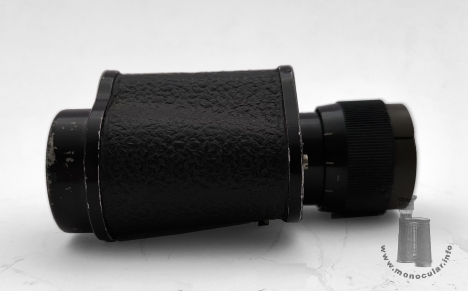
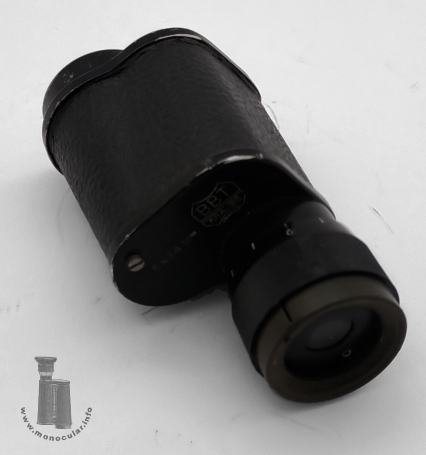


| Das 6x24 ist 100-106mm lang, das Hegäuse ist oben 53x54mm und unten 57x57mm breit. Die Objektivfassung ist 34mm, das rechtsseitige Okularstück 30mm, der Fokussierugnsring 37mm und die Augenmuschel 34mm im Durchmesser. Es wiegt 221g. | The 6x24 is 100-106mm long, the housing measures 53x54mm at the top and 57x57mm at the bottom. The objective lens mount is 34mm, the right-hand eyepiece is 30mm, the focusing ring is 37mm, and the eyecup is 34mm in diameter. It weighs 221g. |
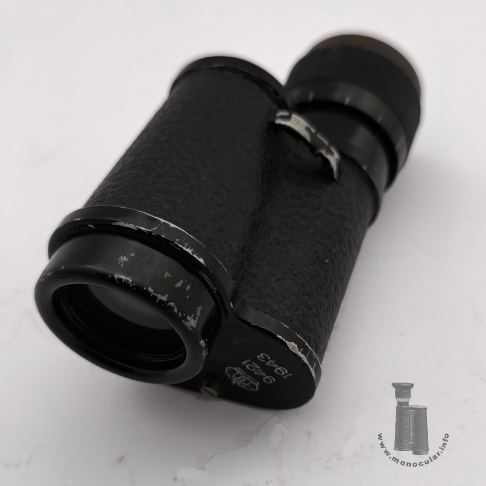
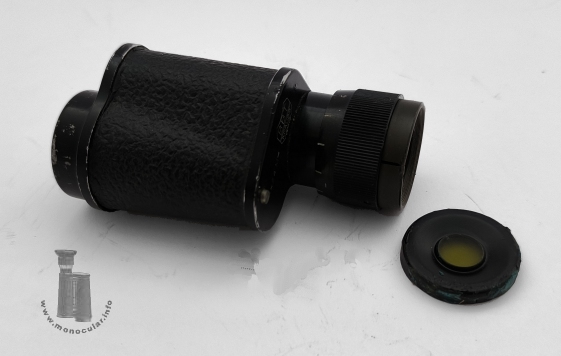
| Wie die anderen 6x24 Militärmonokulare (s. Spindler & Hoyer 6x24) für die schwedische oder dänische Armee gibt es für das Okular ein Filterglas (grün), welches im Köcherdeckel aufbewahrt wird. Der Köcher selbst ist mit der (schwedischen) Krone und der gleichen Armeenummer 9421, aber in kleineren Zeichen mit der Jahreszahl 1932 gestempelt. Höchstwahrscheinlich wurde der Köcher mit einem früheres Militär-Monokular in (in Schweden) 1932 genutzt und in 1943 neu gestempelt. Dafür spricht auch, dass die alte Armeenummer ausgekratzt wurde (s. helle Stelle am Deckel) und nur noch schwach zu erkennen ist (evtl. "Nr. 1380"), und dass er Köcherrand mit einer Metallfassung verstärkt wurde. | Like the other 6x24 military monoculars (see Spindler & Hoyer 6x24) for the Swedish or Danish army, there is a filter glass (green) for the eyepiece, which is stored in the case lid. The case lid itself is stamped with the (Swedish) crown and the same army number 9421 as well as with the year 1932 but in smaller characters. Most likely, the leather case was used for an earlier military monocular in 1932 (in Sweden) and was re-stamped in 1943. This is also supported by the fact that the old army number was scratched out (see light spot on the lid) and is only faintly visible (possibly "No. 1380"), and that the case rim was reinforced with a metal band. |
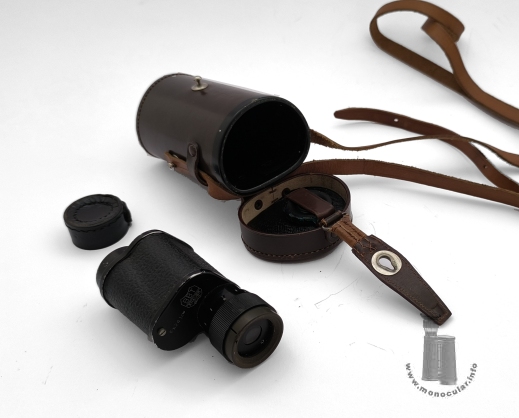
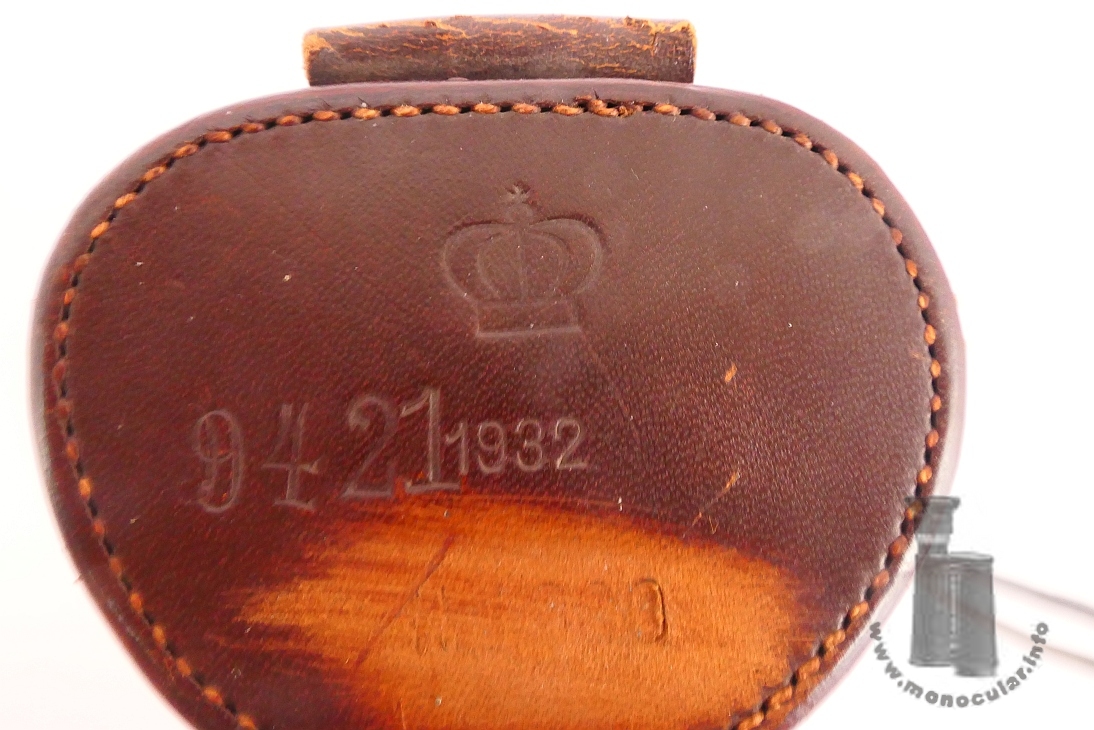
Fotos: Zeun

